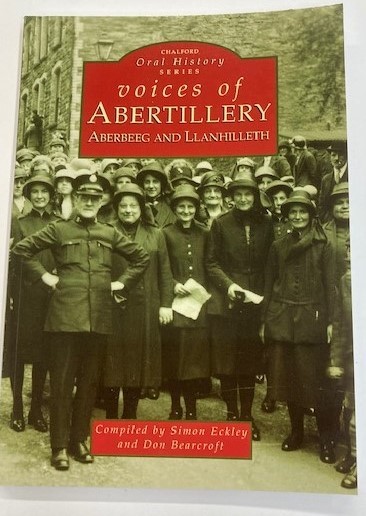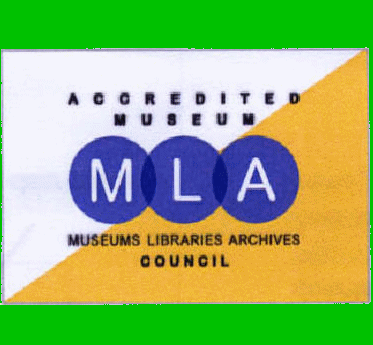Dates for your Diary
Saturday June 17th 10am – 5pm Aberfest
Museum opening times
The Museum is open to the public, free of charge:
Thursday* to Saturday 10am – 1pm
May 100 Club
This month’s prize numbers were drawn by visitor Rita withers and the lucky winners are:-
No 9 Chris Budd £20
No 42 Dewi James £10
If you would like to join our 100 club and be in with a chance of winning, it costs just £1 a month. Ask at the museum for further details.
Thanks
Many thanks to our President, Mr Jack Hanbury, for his very generous donation.
Aberfest Saturday 17th June
Aberfest this year will take place on Saturday 17th June and the museum will be open from 10am until 5pm. There will be face painters within the museum while outside on the car park will be children’s games as well as a ‘Bucking Bronco’. We also hope the museum will be able to offer refreshments outside on the apron, weather not-withstanding!
We will also have a special guest, Phil Parkes, who is an ICON accredited objects conservator with a special interest in arms and armour and he will be at the museum for Aberfest demonstrating the art of making historical ‘chain-maille armour’. He will also be bringing along some pieces for children to try on. Phil runs workshops on this dying art so come along and learn from a pro! And you can find out more using these links:
Phil Parkes website
Titanic link to Blackwood
When the Titanic sank in 1912 one of the first people to pick up its distress call was 25 year old Arthur Moore, an amateur radio enthusiast, who picked up the distress call on his home-made radio in Pontllanfraith, Blackwood. He rushed to his local police station but, understandably, was not taken seriously. While Arthur was unable to help those on board, he went on to develop technology that, many years later, would help to locate Titanic on the sea bed and you can read more here and here.
Eurovision 2023
 From the moment Sam Ryder won the jury vote in 2022, (ultimately coming in second to Ukraine), and the likelihood that the UK would be hosting the competition this year, my Eurovision-mad daughter Sarah along with equally Eurovision-mad friend Stacey, began planning to attend in person. This would be the ninth time that the UK would host the show (last time being in 1998) and the fourth time we would host on behalf of another nation (last time being in 1973 when we hosted for Luxembourg who, incidentally, will be taking part next year after a 30 year absence).
From the moment Sam Ryder won the jury vote in 2022, (ultimately coming in second to Ukraine), and the likelihood that the UK would be hosting the competition this year, my Eurovision-mad daughter Sarah along with equally Eurovision-mad friend Stacey, began planning to attend in person. This would be the ninth time that the UK would host the show (last time being in 1998) and the fourth time we would host on behalf of another nation (last time being in 1973 when we hosted for Luxembourg who, incidentally, will be taking part next year after a 30 year absence).
As soon as the shortlist of seven cities was announced, Stacey began their quest by booking a hotel in five of them (with free cancellation of course) and as the shortlist was whittled down, these were cancelled until just one remained, Liverpool.
Next came the quest to buy tickets. Gone are the days of a single show with just one presenter as was the case in 1982 when Jan Leeming presented the show to an audience of just 2000 in Harrogate. These days there is a team of presenters and nine shows in total, some being ‘heats’ to whittle down the number of entries from around 40 to 26 plus a Friday night ‘jury’ show where each countries’ jury decides the number of points to award to their favourites and which also doubles as a dress rehearsal for the final.
The day that ticket sales opened they were both logged-in and waiting to get in the queue but alas were not successful. Sarah got to within 18 for the Friday jury show before being thrown out and when she managed to get back in, she was at the back of the queue! Even so, the hotel was booked and, although disappointed, they were going to Liverpool come what may, if only to sample the atmosphere! Then came a breakthrough. The organisers announced they were releasing more tickets and this time success! Stacey managed to get tickets, not the final show but for the Friday night Jury show and they loved every second!
From them I learned about a side of the show that we TV viewers never get to see; namely the huge army of backstage hands that fly into action at the end of each act. While we are watching the video introduction to the next country’s entry (which, incidentally, was introduced in 1970 to pad out the show after a few countries dropped out over a dispute leaving just 12 competing), teams of stagehands are hard at work. One team moves in to remove props from the last act and a second team moves in with props for the next act. To aid them in the positioning a projector is shone onto the stage floor highlighting what goes where; a drum kit here, a stool there and in the case of Australia, a car there! On average this is all completed within 40 seconds and on occasions when this isn’t long enough then the presenters play for time by taking us, the audience, over to chat with acts in the wings. It’s an incredibly well-oiled machine, carried out with military precision.
 The tradition of the winning country hosting the following year began in 1959 though apparently, should Australia ever win, they will have to forego hosting due to the time-lag between Europe and Australia.
The tradition of the winning country hosting the following year began in 1959 though apparently, should Australia ever win, they will have to forego hosting due to the time-lag between Europe and Australia.
Yes, love it or hate it, the Eurovision song contest, which began way back in 1956, is as popular as ever and is here to stay.
There is more on the history of Eurovision in our June 2020 newsletter which can be accessed here
Photos courtesy of Sarah and Stacey
Voices of Abertillery
 I was a house parlour maid when I started and I was there for a couple of years and the war broke out. When I started I had ten shillings a week with one half-day and a Sunday off once a month. When my boss’s daughter and all the governess, the nursery maid and the children came to live with us because of the war there was all this extra work and I thought to myself, ‘I don’t know, this is an awful lot of work for not getting any more money’. So I mentioned it to the cook and the parlour maid said it’s not good bothering, you won’t get it and I was quite cross about it. The crunch came one day when the governess said she’d like her meals brought up (that would be on the fourth floor!). I had enough work on, so I said, ‘I’m not going to do it, I’m sorry but you’ll have to come down and have your meals with us’. She was so annoyed that she went to my boss and told him and I was called into the library and I thought, ‘Of, I’m for the high jump here’. I explained and said I was doing all this extra work and I didn’t think it was fair. I’d got plenty of ordinary work on without waiting on her and he said ‘What if I give you a rise in wages?’ I said ‘No thank you sir! I’d prefer not for the simple reason I don’t see why I should keep going up and down the stairs for her’. We all had a rise after that and I still didn’t go up to her. So I quite won that battle. I was pleased because she had nothing to be toffee-nosed about. [RM]
I was a house parlour maid when I started and I was there for a couple of years and the war broke out. When I started I had ten shillings a week with one half-day and a Sunday off once a month. When my boss’s daughter and all the governess, the nursery maid and the children came to live with us because of the war there was all this extra work and I thought to myself, ‘I don’t know, this is an awful lot of work for not getting any more money’. So I mentioned it to the cook and the parlour maid said it’s not good bothering, you won’t get it and I was quite cross about it. The crunch came one day when the governess said she’d like her meals brought up (that would be on the fourth floor!). I had enough work on, so I said, ‘I’m not going to do it, I’m sorry but you’ll have to come down and have your meals with us’. She was so annoyed that she went to my boss and told him and I was called into the library and I thought, ‘Of, I’m for the high jump here’. I explained and said I was doing all this extra work and I didn’t think it was fair. I’d got plenty of ordinary work on without waiting on her and he said ‘What if I give you a rise in wages?’ I said ‘No thank you sir! I’d prefer not for the simple reason I don’t see why I should keep going up and down the stairs for her’. We all had a rise after that and I still didn’t go up to her. So I quite won that battle. I was pleased because she had nothing to be toffee-nosed about. [RM]
The above is an extract from ‘Voices of Abertillery’ compiled by Simon Eckley & Don Bearcroft. It’s a compilation of memories from interviews of local people and is available to buy now from the museum for just £1 a copy. Pick up your copy while stocks last.
Day School
Gwent County History Association; Monmouthshire Antiquarian Association; Caldicot and District Local History Society presents:
Enclosures, Engines and Ecclesiastics
Saturday 1st July 9.30am – 4.15pm at Rogiet Community Church Hall. Price is £25 to include lunch plus morning and afternoon tea/coffee and biscuits. For more information or to book please call 07894 822004.
Coronation
Following the Coronation of King Charles III, a former member and Vice President got in touch to share his memories of the coronation of Queen Elizabeth in 1953. Mr Simon Campbell wrote:
To celebrate the Coronation of Queen Elizabeth II, bonfires were lit over the country. One of these was on the highest of the Malvern Hills, the Worcestershire Beacon. At that time there was a little café on the summit and that was where I slept – intermittingly – the previous night. I was a Boy Scout and a group of us, under the leadership of my father, guarded the bonfire to prevent anyone setting it alight prematurely as had happened at other venues. My father had an AJS motorcycle and Watsonian sidecar which he rode up the very steep path to the summit. At intervals, as we took it in turn to watch over the beacon, he fired up the bike and swept the surrounds with his headlamp. The bonfire was safe and provided a glorious spectacle at the right time!
Many thanks to Simon for the above and if any other readers have any memories to share please get in touch.
Today is the tomorrow I worried about yesterday and all is well.
The Killer Smog of ‘52
Much is spoken these days about the need for clean air even though London had suffered from poor air quality since the 13th century. But it took a killer smog in 1952 that killed thousands before parliament acted and introduced the Clean Air Bill which is now widely accepted by historians as a landmark in environmental protection….
It had all started late on Thursday 4th December when an anticyclone settled over London. With no wind, it caused a temperature inversion with cool air trapped under a layer of warmer air. With most homes heated by coal burning fires, the resulting smoke from chimneys mixed with smoke from car exhausts and industrial smoke to form a thick dense smog which Londoners woke to on Friday 5th December. Londoners were used to these conditions but this time it was different. Normally it would only last a few hours, a day at most, but this time it didn’t budge and visibility was reduced to virtually nothing. By the end of that first day it is estimated over 200 people had died, mostly in their own homes. They were found dead in bed or sat in their armchairs.
Saturday 6th December – day 2
The smog showed no signs of lifting and most people barricaded themselves in their homes and stuffed rags under doors to try and keep the smog out. It was bitterly cold so coal was heaped on fires sending yet more pollutants into the atmosphere with nowhere to disperse. Hospitals started to fill up with people struggling to breathe and doctors started to realise they had a serious problem on their hands though the authorities thought it to be ‘just another smog’. The death toll continued to rise with over 400 dead in just two days.
Sunday 7th December – day 3
The coal being burnt in homes contained sulphur which was giving the smog a yellow hue. The sulphur reacted with the damp air to give off sulphuric acid which was being breathed in. By now London was virtually at a standstill. The smog was so thick it was impossible to drive. All boats on the Thames were moored up and, with only a few trains still running, an eerie silence befell London. Ambulance crews taking the ill to hospital were forced to double up so one man could walk in front of the ambulance to guide it, such was the problem with visibility. In the 1950s most adults smoked and so their lungs were already compromised before the smog arrived. But still there was no panic among the population though those that could left the city for the weekend. The Queen and Prince were in Kent visiting friends while the Prime Minister, Winston Churchill, spent the weekend at Chequers, the PM’s country retreat. By Sunday evening some who had dared venture out, were collapsing in the streets. The smog was so thick they lay dying in the road, unseen by others passing by within feet. There were around 600 deaths this day alone.
Monday 8th December – day 4
With parliament back in session there were calls for a declaration of emergency but the government refused to acknowledge there was a problem though hospitals and other emergency workers knew a catastrophe was happening. And still the smog lingered.
Tuesday 9th December – day 5
Londoners woke yet again to a thick blanket of smog but by now there was a slight breeze and things started to improve. Almost as quickly as it had arrived, the smog was gone but it soon became apparent that a great tragedy had befallen London, and this time the government could not ignore it. At first they would only acknowledge that a larger number of people than normal had died over the weekend, giving the official figure as around 2500. This was later amended to 4000 when the scale of the deaths was finally realised.
This figure though still only took account of the number of people who had died over the four days that the smog lasted. However, people’s lungs and other organs had been so damaged by the smog that they continued to die long after it had lifted. Over the next four months a further 8000 people died and the government blamed the excess deaths in London on a flu outbreak. However it is now known that there was no flu outbreak and the deaths were caused by the smog. In total it is now believed that over 12,000 people died as a direct result of the killer smog of ’52.
Sally Murphy
Wikepedia article
Channel Five recently showed a documentary on London’s Killer Smog and you can watch it by using this link
Top Of Page
© Abertillery & District Museum 2023 
